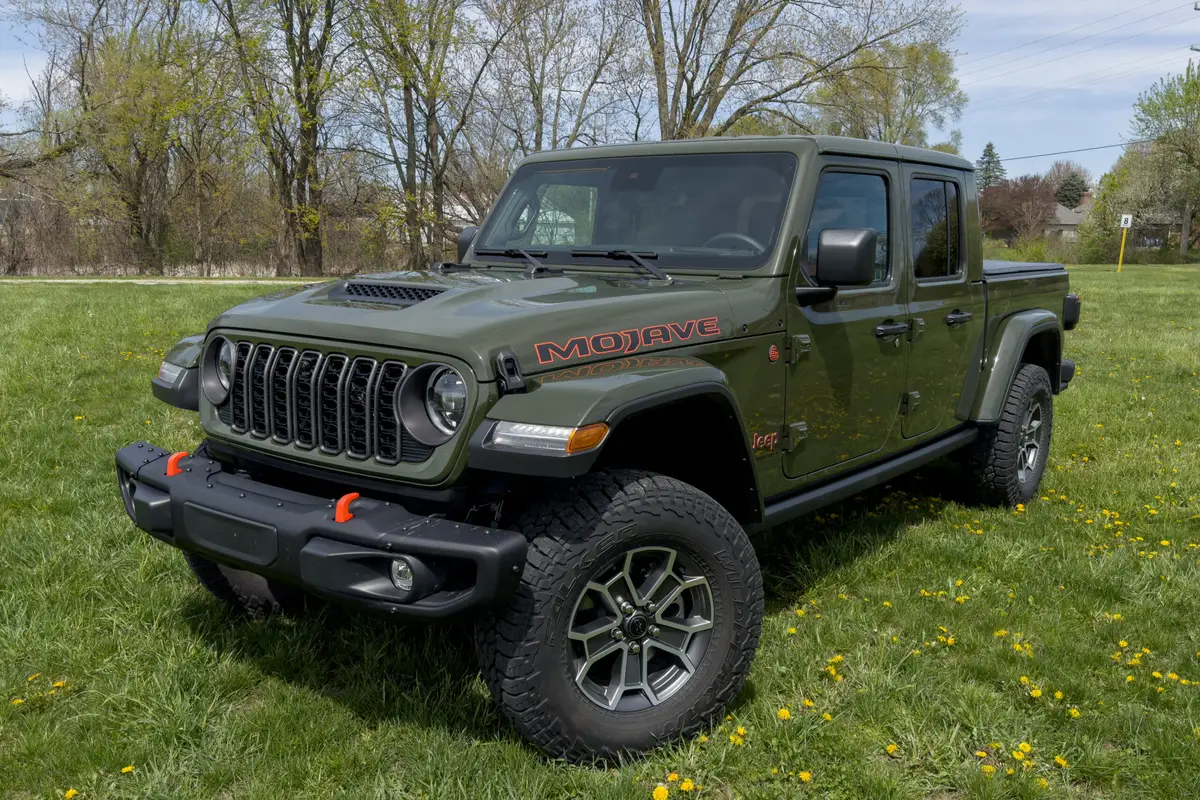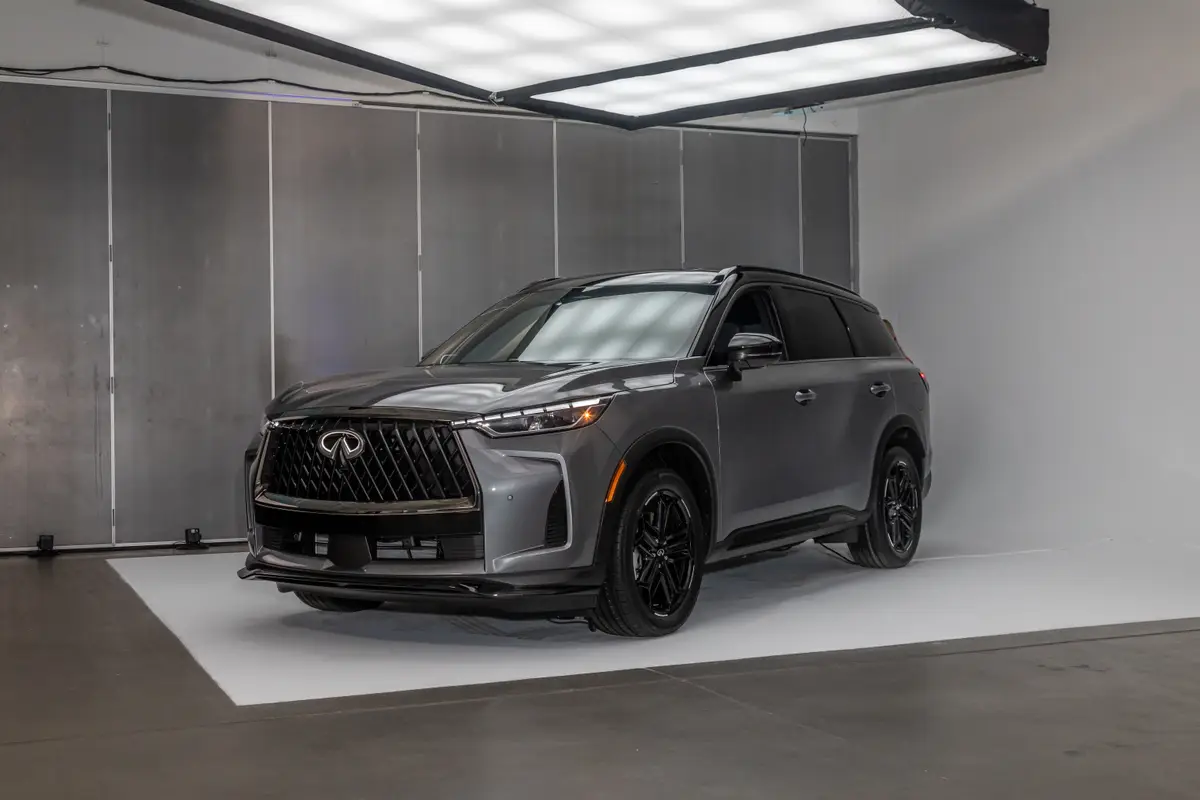chicagotribune.com's view
For the 2001 model year Mercedes-Benz has unveiled the next-generation entry-level C-Class sedan. It sports a new look and new engines, which means it also sports new names — the C240 and C320, which replace the C230 and C280.
The C240, with its 2.6-liter, 168-horsepower V-6 and 6-speed manual or 5-speed automatic, replaces the C230 with its 2.3-liter, 185-h.p. supercharged 4-cylinder. No more 4-bangers in the C-Class.
What you lose in off-the-line kick, you gain in off-the-line quiet from the smoother V-6.
And the C320 with its 3.2-liter, 215-h.p. V-6 and 5-speed automatic with Touch Shift clutchless manual (optional in the C240) replaces the old C280 with its 2.8-liter, 194-h.p. V-6.
Lots of energy (zero to 60 m.p.h. in 6.9 seconds) with the 3.2-liter, yet lots of quiet. Very good movement off the line and away from the light with noticeably more punch than the 2.8.
We tested the C320 with optional Sport package that for $2,950 includes a sport-tuned suspension for optimum, sure-footed handling and precise steering response for sit-flat-in-the-saddle cornering at speed in basically a luxury sedan.
The package also includes alloy wheels, leather upholstery, sport seats, sculptured lower-body trim, engraved aluminum interior trim and blue tinted glass.
The leather sport seats, designed for folks nicknamed “Beanpole,” come with low side bolsters that may help tuck in the tummy, but provide little support along the chest to keep you planted in aggressive motoring.
We’d be happy with just the sports suspension, but it isn’t offered as a stand-alone option.
The C320 offers four-wheel anti-lock brakes as standard as well as Electronic Stability Control, or ESP, that provides braking to a slipping wheel to keep the car going in the direction pointed when making a corner or turn. It is teamed with the ASR (automatic slip reduction) traction-control system that uses braking to a slipping wheel or cuts throttle to correct slipping when moving forward.
ESP and ASR work so well you won’t notice, as we found during a heavy rain on oil-filmed pavement.
The C320 Sport is aimed at luring younger, more performance-oriented buyers (one reason for the Touch Shift clutchless manual) away from the BMW 3-Series.
But safety is still primary. The C320 comes loaded with dual-force air bags whose deployment and speed of deployment depends on the severity of impact and whether or not you are belted; front and rear side-curtain air bags that drop from the ceiling in a side impact to protect the head; and door-mounted side-impact air bags front and rear for chest and lower body protection in a side impact.
There’s also Brake Assist, which uses sensors to detect you are about to exceed normal braking limits and activates the ABS now; and BabySmart child seat sensors in the front passenger seat that detect a special Mercedes child seat and deact ivate the air bag while a light in the dash is a reminder that the bag has been deactivated.
And there’s Tele Aid emergency call system, similar to OnStar at General Motors.
Tele Aid, first offered in the top-of-the-line S-Class sedan in 2000, moves into the Mercedes entry-level sedan. Tele Aid does such things as automatically sending medical help to the scene (pinpointing location via global positioning satellite) if an air bag deploys, offering remote door unlocking if you leave the keys inside or having the assistance center call you if the car alarm is activated.
There’s also an “SOS” button above the rearview mirror to use for a medical or mechanical emergency, a roadside-assistance button to summon help if you run out of gas and an information button to get answers to simple questions, such as where’s the spare?
We pressed that information button to ask about one of the controls, and it took several minutes before a response came bac k thro ugh the car’s audio system and several more minutes once the question was answered before able to exit the system. Hope “SOS” is quicker.
Using the same telematics technology as Tele Aid, you can equip the 2001 C-Class with optional COMMAND, a center console LCD display for Web-based information services, such as weather, stock quotes, sports scores and calendar reminders for an annual fee of $125 plus airtime.
Mercedes boasts the new C-Class “is jammed with useful, innovative technology, raising the bar yet again in its market segment.” Let’s hope Mercedes keeps that bar within reach for those of us who find the world gone DVD while still trying to program the VCR.
With all these sophisticated systems, you have to wonder whether Mercedes wants the entry-level C320 to be a luxury or a performance sedan. Is Mercedes catering to owners who want to upgrade from their old C-Class or empty-nesters wanting to downsize from their E-Class, or is it hellbent on winning over BMW enthusiasts?
Mercedes says that the $30,000 to $40,000 luxury-car market is growing faster than the $50,000 to $60,000 end of the segment (entry-level cars account for 70 percent of the luxury market) and that performance-oriented, entry-level luxury cars are spurring the growth.
Entry-level cars are vital because typically the person who spends $30,000 on a luxury car and is happy, stays with that brand when income allows a $40,000 replacement.
But Mercedes takes great pains to point out that this new C-Class, especially in Sport trim, was designed to keep younger buyers from heading into a BMW showroom for a 3-Series.
Just hope Mercedes doesn’t become so focused on BMW that it loses sight of what made the C-Class a success when it replaced the Mercedes 190 series in the 1994 model year. It had most of the features and qualities of a $50,000 to $60,000 luxury car in a $30,000 to $40,000 package. Mercedes prestige and image, not to mention quality, at a discount price.
While 190 sales reached 15,000 units in 1993, C-Class sales topped 23,000 the first year, will top 30,000 this year and are expected to exceed 40,000 in 2001, Mercedes said.
One way to cater to younger folks (Mercedes is counting on the new C-Class to lower the average buyer age to 46 from 48) is through redesign.
The C-Class sports a coupe-like profile with a slanted deck lid and hood with “figure 8” shaped headlamps. Quite a departure from the more formal stand-up decklid and hood with oval lamps from the previous generation.
Have to say the coupe-like styling left us cold. Overall, the coupe-like roofline and slanted hood/deck makes the car look smaller than it is, though wheelbase, length and width are all fractionally larger. However, the car is 0.9 inch shorter in height than the old model, thanks to that coupe-like roofline.
You also may find, as we did, that at first glance, the rear quarter pan el has a definite BMW 3-Series similarity. Until you see the grille, you can’t tell it’s a Mercedes.
At least the new shape is more aerodynamic, which means the air slips over the body smoothly. So even when you crack the driver’s window an inch, you don’t have to holler to be heard over wind noise.
But we liked the stand-up hood and stand-up deck lid. Made the car look more regal. Want to look like a coupe? Take away two doors.
Base price of the C320 is $36,950. Standard equipment includes climate control, tilt/telescoping steering column, AM/FM radio with cassette and power memory front seats.
Besides the sports suspension, the other option we’d favor is a power glass sunroof, though it’s available only in a package that includes a rear window sunshade and rain sensor windshield that runs $1,340.
Latest news



